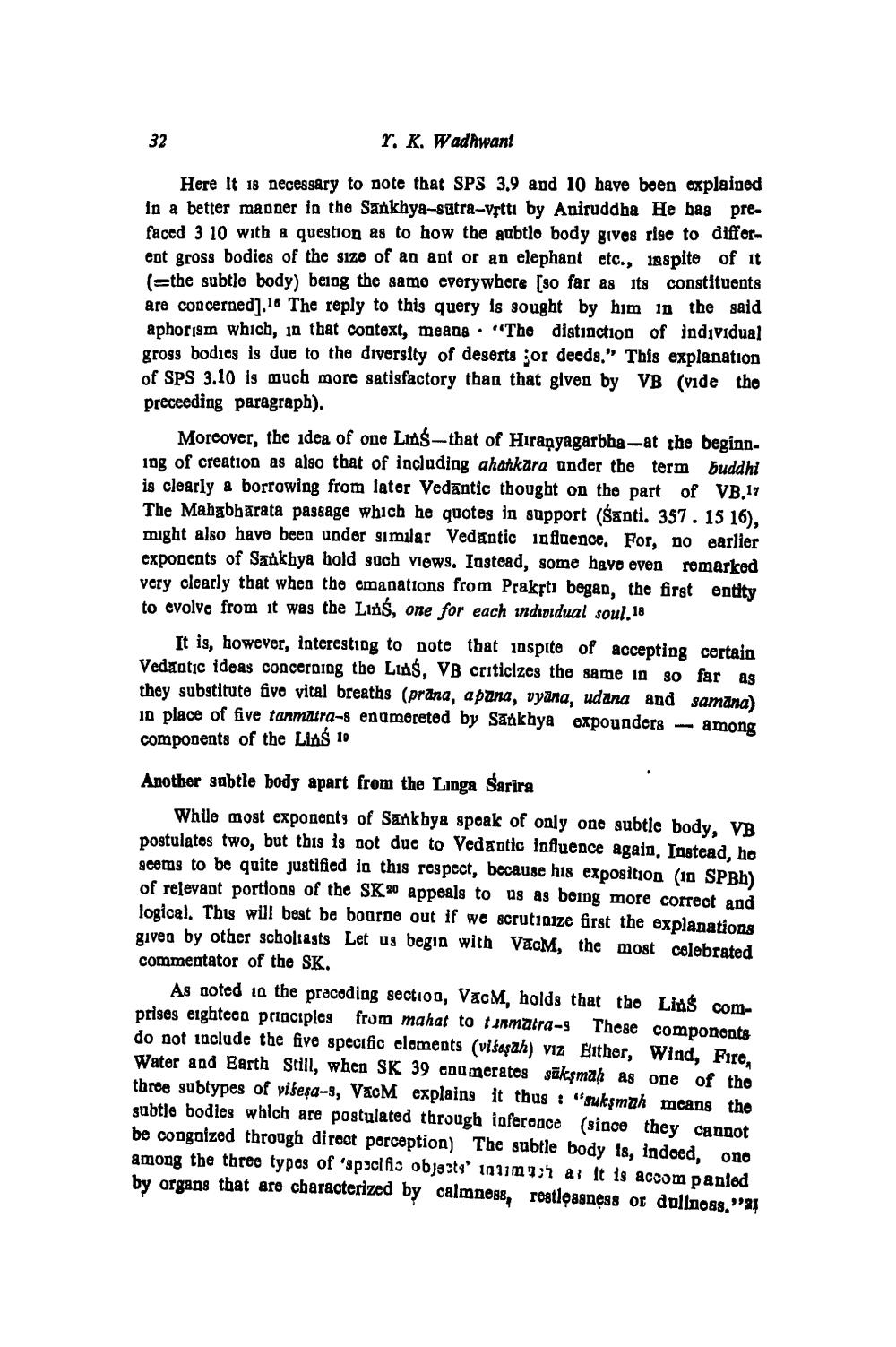________________
r. K. Wadhwant
Here It 19 necessary to note that SPS 3.9 and 10 have been explained In a better manner in the Sankhya-sutra-vptti by Aniruddha He bas prefaced 3 10 with a question as to how the aubtlo body gives rise to difforent gross bodies of the size of an ant or an elephant etc., 188pito of it (=the subtle body) being the same everywhere (so far as its constituents are concerned].16 The reply to this query Is sought by him in the said aphorism which, in that context, means. "The distinction of individual gross bodies is due to the diversity of deserts or deeds." This explanation of SPS 3.10 is much more satisfactory than that given by VB (vide the preceeding paragraph).
Moreover, the idea of one Lins-that of Hiranyagarbha-at the beginn10g of creation as also that of including ahankara under the term buddhi is clearly a borrowing from later Vedāntic thought on the part of VB.17 The Mahabharata passage which he quotes in support (santi. 357. 15 16), might also have been under similar Vedantic influence. For, no earlier exponents of Sankhya hold such views, lastead, some hayo even romarked very clearly that when the emanations from Prakrti began, the first entity to evolve from it was the Lins, one for each individual soul.18
It is, however, interesting to note that inspite of accepting certain Vedantic ideas concerning the LIAS, VB criticizes the same in 80 far as they substitute five vital breaths (prana, a pona, vyāna, udana and samana) 10 place of five tanmatra-s enumereted by Saakhya expounders among components of the Lins 10
Another subtle body apart from the Linga Sarira
more correct and
" we scrutinize a
asts Let us be
While most exponents of Sankhya speak of only one subtle body, VB postulates two, but this is not due to Vedantic influence again. Instead, ho seems to be quite justified in this respect, because his exposition (10 SPBh) of relevant portions of the SK 20 appeals to us as being more correct and Jogical. This will best be boarne out if wo scrutinize first the explanations given by other scholiasts Let us begin with VacM, the most celebrated commentator of the SK.
As noted in the pracoding section, VácM, holds that tho Lins comprises eighteen principles from mahat to tinmatra-9 These components do not include the five specific cloments (višeşah) viz Either, Wind, Fire, Water and Earth Still, when SK 39 enumerates sūksmah as one of tho three subtypes of visesa-9, VacM explaing it thus : "suksmah means tho subtle bodies which are postulated through inferonce (since they cannot be congaized through direct porception) The subtle body is, indood, ono among the three typos of 'specific objezte' 1011m1;h ai It is accompanied by organs that are characterized by calmness, restlessness or dolinoas."25




